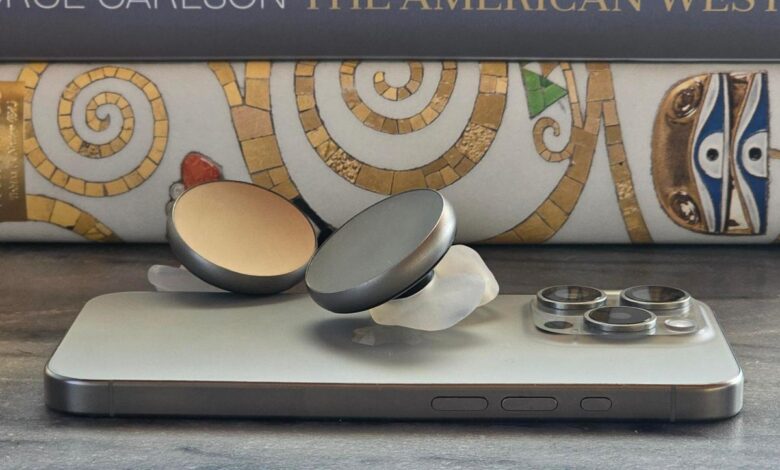Iyo thinks its gen AI earbuds can succeed where Humane and Rabbit stumbled

A month after launching its first product, Humane’s co-founders have reportedly put their well-funded startup on the market. While even the firm’s biggest cheerleaders didn’t expect the Ai Pin to change the world in such a short timeframe, few of its many detractors expected things to go so sideways, so quickly.
Humane’s biggest competitor, the Rabbit R1, didn’t fare much better. Shortly after launch, the generative AI-fueled handheld was savaged by critics. The most salient critique of the “half-baked” device was that it could been an app, rather than a $200 piece of hardware.
The excitement ahead of both devices’ launch is proof-positive that there is interest in a new form factor that leverages LLMs (large language models) in a way that is genuinely useful in our daily lives. At the moment, however, it’s safe to stay that no one has yet stuck the landing.
Iyo represents a third form factor in the push to deliver standalone generative AI devices. Unlike Humane, which attempted to introduce a wholly new form factor by way of a lapel pin, Iyo is building its technology into an already wildly successful category: the Bluetooth earbud.
When the Iyo One launches this winter, the company will be able to build on several years of consumer education around the integration of assistants like Alexa and Siri into headphones. The leap from that to more sophisticated LLM-based models is far shorter than one like the Ai Pin, which requires a fundamental rethink of how we interact with our devices.
Much like Humane and Rabbit, Iyo’s founding predates the current AI hype cycle. The company traces its history all the way back to the before times of 2019.
“I saw all these people I knew in AI, three different research orgs inside Google, all the external people, OpenAI and others all making this incredible progress with these language models, all independently,” founder and CEO Jason Rugolo told TechCrunch. “I realize it’s algebra and data, and no one has a corner on either of those things. I saw that the foundational models were going to proliferate and become a commodity — very controversial in 2019.”
Whereas Humane was able to drum up a good bit of interest reliant on its founders’ time at Apple, Iyo was actually formed inside Google. The firm was incubated inside the Alphabet X “moonshot factory” that gave rise to projects like Glass and Project Loon. Iyo was spun off in 2021. Unlike X graduates Waymo, Wing and Intrinsic, however, the company does not operate as a subsidiary. Instead, Alphabet served as Iyo’s first investor. As Rugolo is quick to point, the search giant does not occupy a seat on the company’s board.
Another important advantage is that contrary to its name, the One won’t be Iyo’s first product. You can currently go to the firm’s site and purchase a different — but related — audio device. The $1,650 Vad Pro is effectively a sophisticated in-ear studio reference monitor. The device sports a similar rounded form factor to the One, along with head-tracking, but Iyo’s first commercially available device is wired.
“If you’re building in a digital audio workstation like Logic Pro,” says Rugolo, “it’s paired with a piece of software we wrote that applies our virtualization technology.” This is designed to help engineers create spatial audio mixes.
The Vad Pro speak to another important element of the Iyo One pitch: They’re designed to be, above all, a premium set of headphones. Unlike the Ai Pin and R1, which offer no value outside their AI capabilities, the Iyo One can also simply function as a good pair of headphones.
The headphones are noticeably larger that standard Bluetooth earbuds. That’s due, in part, to the inclusion of a significantly larger battery, which Rugolo says can get up to 16 hours on a charge when paired with a phone in Bluetooth mode. If you’re using the One in cellular mode without a tethered handset, on the other hand, that number shrinks considerably to around an hour and a half.
Cost is a concern, as well. While the Iyo One will cost a fraction of the Vad Pro, it’s still cheap at $599 for the Wi-Fi model and $699 for the cellular version. The latter puts it at the same price point as the Ai Pin and hundreds of dollars more than the R1. That’s well out of the average consumer’s range for buying a piece of hardware just to mess around with. Unlike the Ai Pin, however, the Iyo One will not require a monthly subscription fee.

“That kind of model is really something that comes from venture,” Rugolo said. “They try to drive the companies hard to get people locked in. I don’t like that model. It’s not the best for customers.” The cellular version will, however, require users to sign up for a plan with their carriers. That’s just standard practice.
As Nura’s eventual acquisition by Denon demonstrated, the Bluetooth earbud category is hard for a startup, regardless of how novel the underlying technology might be. Companies are competing with the industry’s biggest names on one end, including Apple, Samsung and Google. On the other, you’ve got pairs often designed by Chinese manufacturers that can be had for as little as $10 new.
Rugolo thinks, however, that the earbuds will provide value from day one. The Ai Pin and R1 have struggled to say the same.
“I think the key is delivering value immediately, right out of the box, focusing on the features you’re going to ship with,” the Iyo founder said. “We believe this is a platform, and we think there are going to be millions of what we call ‘Audio-First Apps,’ these AU apps. But people don’t buy platforms. They buy products that do super useful stuff for them. So, just on the sound isolation, the comfort, the music quality alone, we think there’s a very large market for these devices.”



